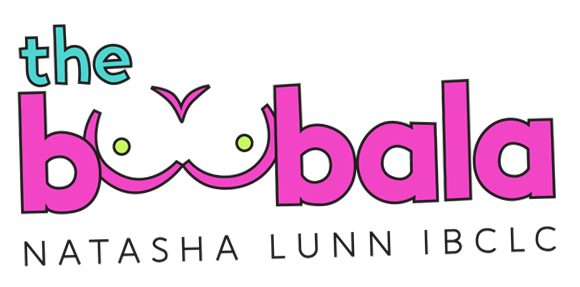Page Content
- Does your milk supply drop with your period?
- How long do postpartum breastfeeding cramps last?
- What are the signs of pregnancy while breastfeeding?
- How do I know if I have a clogged milk duct?
- What is the 5 5 5 rule for postpartum?
- What causes cramps in breastfed babies?
- How to tell if you have thrush while breastfeeding?
- What foods should breastfeeding moms eat to prevent colic?
- Is it normal to have period pains while breastfeeding?
- Is it normal to get cramps while breastfeeding?
Understanding Cramps While Breastfeeding
Experiencing cramps while breastfeeding can be an uncomfortable and concerning issue for many new mothers. However, it’s important to understand that this phenomenon is often a normal part of the postpartum experience.
The Role of Hormones
One of the primary reasons for cramping during breastfeeding is the release of hormones, particularly oxytocin. When a mother breastfeeds, oxytocin is released, which not only helps with milk ejection but also stimulates uterine contractions. These contractions are the body’s way of helping the uterus return to its pre-pregnancy size. As a result, many women report feeling menstrual-like cramps during nursing sessions, especially in the days immediately following childbirth.
Timing and Intensity of Cramps
The intensity of these cramps can vary. For some women, the cramps may be mild and manageable, while for others, they can be quite painful. This discomfort is typically more pronounced during the first few days postpartum, as the body is adjusting and healing. As time goes on, many mothers find that the cramps diminish in intensity and frequency.
When to Seek Help
While cramping during breastfeeding is generally normal, there are instances when it may indicate a more serious issue. If the cramps are accompanied by severe pain, heavy bleeding, or other concerning symptoms, it is advisable to consult a healthcare professional. These could be signs of complications that require medical attention.
Coping Strategies
For mothers experiencing cramps while breastfeeding, there are several strategies that may help alleviate discomfort. Staying hydrated, using heat packs on the abdomen, and practicing relaxation techniques can be beneficial. Additionally, ensuring a comfortable breastfeeding position can also help reduce tension and discomfort during feeding sessions.
In conclusion, while cramping during breastfeeding can be an unwelcome experience, it is often a normal part of the postpartum journey. Understanding the underlying causes and knowing when to seek help can empower mothers to navigate this challenging time with greater confidence and comfort.
Does your milk supply drop with your period?
During the menstrual cycle, hormonal fluctuations are inevitable, impacting breast milk production. The two primary hormones involved are estrogen and progesterone. As menstruation approaches, these hormone levels decrease, leading to a drop in milk supply for some women.
How long do postpartum breastfeeding cramps last?
These pains usually last for two to three days after the birth. Women who have previously had a baby are more likely to experience after‐birth pains. Breastfeeding stimulates the uterus to contract and increases the severity of the pains.
What are the signs of pregnancy while breastfeeding?
In the early stage or first trimester of your pregnancy, you may have nipple tenderness and breast soreness. You may have a decreased food and water intake due to morning sickness and feel tired. Such physical discomfort may increase while breastfeeding.
How do I know if I have a clogged milk duct?
Symptoms of plugged ducts, mastitis
Plugged duct symptoms progress gradually, and can include pain, a hard lump, a warm and painful localized spot or a wedge-shaped area of engorgement on the breast. Mastitis symptoms appear rapidly and include flu-like symptoms such as fever, chills, fatigue and body aches.
What is the 5 5 5 rule for postpartum?
The 5-5-5 postpartum rule prescribes 15 days of rest for moms following childbirth – five days in the bed, five days on the bed and five days around the bed. It encourages moms to take a break from housework and caring for older children, and simply spend time with the new baby.
What causes cramps in breastfed babies?
Maternal diet – certain foods in the mother’s diet may cause symptoms of food allergy or intolerance in her breastfed baby. Some studies have found that particular foods eaten by the motherincluding cabbage, cauliflower, broccoli, chocolate, onions and cow’s milkcan cause an attack of colic in her breastfed infant.
How to tell if you have thrush while breastfeeding?
Signs of thrush
- a burning pain in your nipples, especially after every feed.
- itchy nipples that mat be sensitive to touch.
- flaking and/or shiny skin on the nipple or areola – nipple skin and areola may be red on lighter skin and darker brown, purple or grey on darker skin.
What foods should breastfeeding moms eat to prevent colic?
A breastfeeding mother’s diet should include plenty of water and an adequate consumption of fruits, vegetables, whole grains, lean proteins and low-fat dairy sources.
Is it normal to have period pains while breastfeeding?
Some women find their nipples feel more sensitive at certain times during their menstrual cycle. This can make breastfeeding less comfortable for a few days each month. The discomfort is usually mild and short-lasting, so most women are able to continue breastfeeding through it.
Is it normal to get cramps while breastfeeding?
“The uterus is actually contracting during breastfeeding, which is why some people describe cramping during breastfeeding as ‘after pains,’” she says. While they’re uncomfortable, the cramps help the uterus contract back down to its normal size after delivery, which is a process that takes several weeks, Patrick says.

